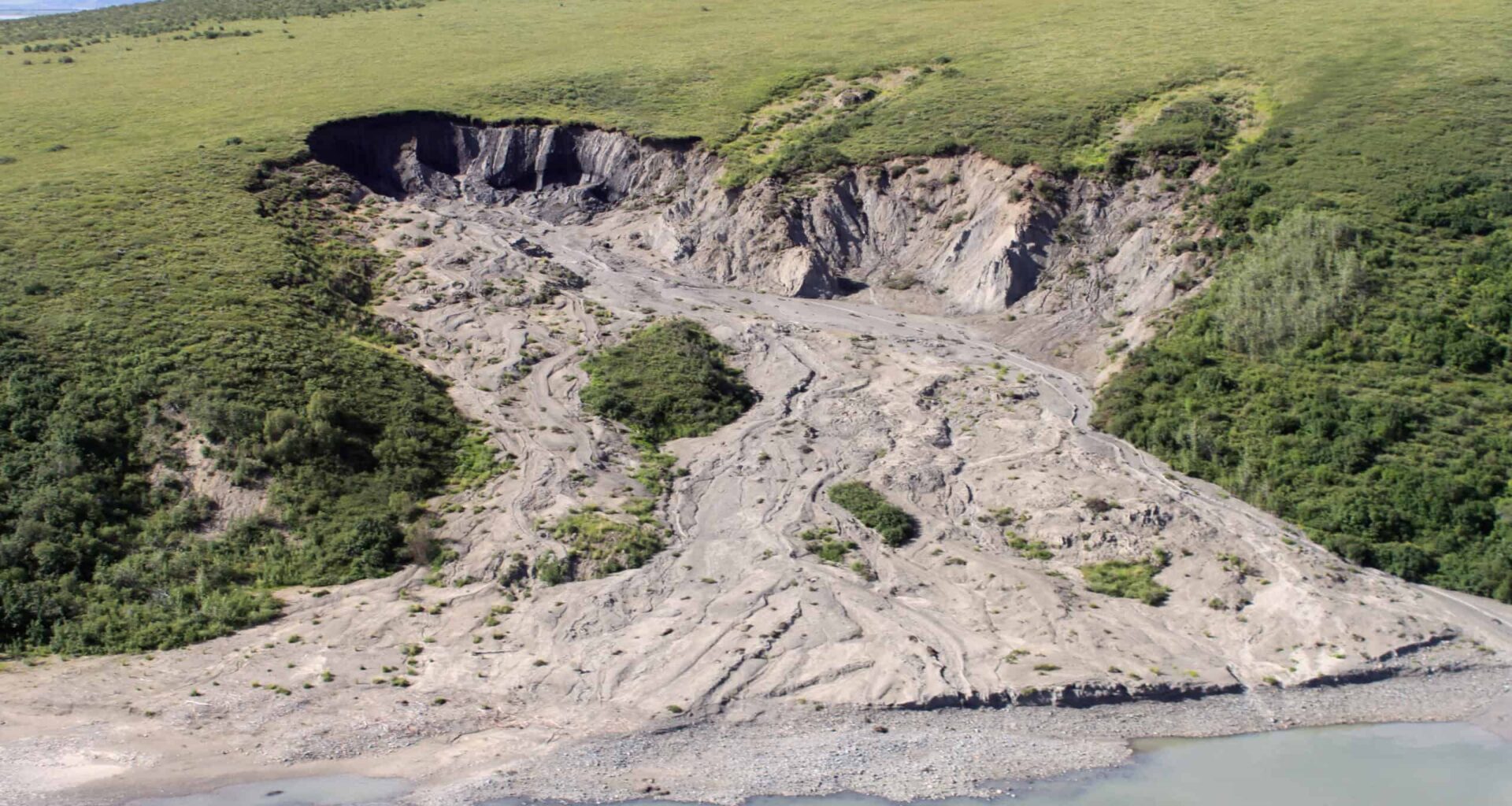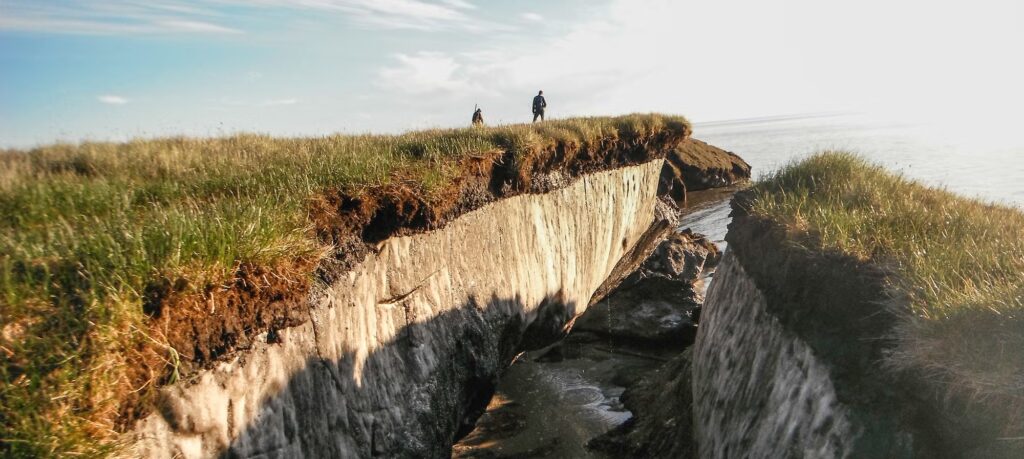 Thawing permafrost in Alaska. Image credits: Brandt Meixell/USGS.
Thawing permafrost in Alaska. Image credits: Brandt Meixell/USGS.
The frozen, barren soil of the Arctic isn’t as lifeless as it looks. Locked inside the permafrost is a strikingly diverse community of microbes. They’ve been asleep for millennia, alive, but inactive, in a kind of suspended animation. As the ice begins to thaw, these ancient organisms start to stir. What happens then?
A team of researchers decided to find out. They reanimated microbes from Arctic permafrost and, after a sluggish start, the organisms began to thrive — producing methane and carbon dioxide in the process.
“These are not dead samples by any means,” said Tristan Caro, lead author of the study and a former graduate student in geological sciences at CU Boulder. “They’re still very much capable of hosting robust life that can break down organic matter and release it as carbon dioxide.”
Finding Ancient Microbes
Permafrost is, technically speaking, a mix of soil, rocks, and ice that has been frozen solid for at least two consecutive years. Around 15% of the Northern Hemisphere, or 11% of the global land surface, is underlain by permafrost. There’s a lot of it, and it hosts many microbes we know very little about.
To peer into this frozen world, a team of scientists ventured to the Permafrost Research Tunnel near Fox, Alaska. Operated by the U.S. Army Cold Regions Research and Engineering Laboratory, the tunnel offers a unique window into the past. It provides access to deep layers of permafrost that have been frozen since the late Pleistocene, some for more than 40,000 years.
The researchers collected cores of permafrost from the surface, about 4,200 years old, and from deep within the tunnel at depths of 35, 54, and 83 meters.
“The first thing you notice when you walk in there is that it smells really bad. It smells like a musty basement that’s been left to sit for way too long,” said Caro, now a postdoctoral researcher at the California Institute of Technology. “To a microbiologist, that’s very exciting because interesting smells are often microbial.”
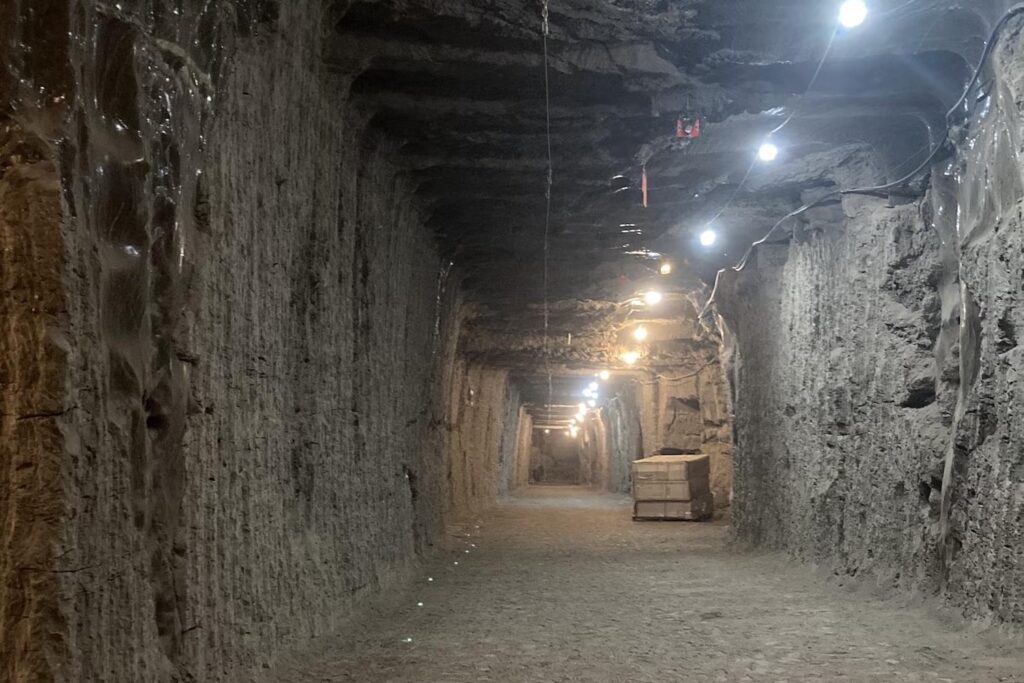 The U.S. Army Corps of Engineers’ Permafrost Tunnel near Fairbanks, Alaska. Image credits: Tristan Caro.
The U.S. Army Corps of Engineers’ Permafrost Tunnel near Fairbanks, Alaska. Image credits: Tristan Caro.
So, they gathered their samples and gently thawed the ancient soil under controlled anaerobic (oxygen-free) conditions and at different temperatures, from just below freezing at -4 degrees Celsius to a warmer 12 degrees Celsius. They gave the microbes “heavy” hydrogen atoms, called deuterium, to track how the microorganisms drank water and then used the hydrogen to build cellular membranes. Essentially, the deuterium was a way to track microbial activity.
First Slow, Then Fast
At first, the microbes moved incredibly slowly. Sometimes, it was barely detectable.
They would replace only about 1 in 100,000 cells per day. At this rate, the average time for the microbial community to double, known as its generation time, was estimated to be between 3 and 57 years. For most active microbes, this period is less than a day. This “slow reawakening” suggests a natural buffer: even if a sudden heatwave hits, it might take years before microbial activity really takes off, especially if the ground refreezes in winter.
But after 6 months, their activity drastically changed.
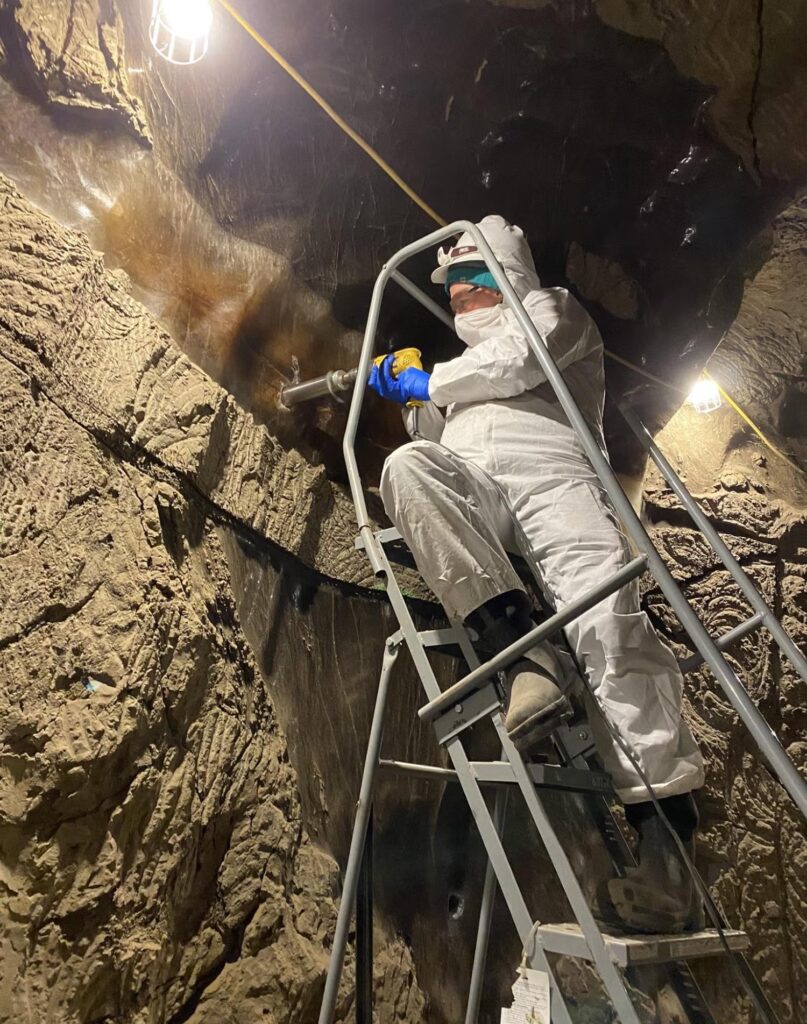 Robyn Barbato of the Cold Regions Research and Engineering Laboratory drills a sample from the walls of the Permafrost Tunnel. Image credits: Tristan Caro.
Robyn Barbato of the Cold Regions Research and Engineering Laboratory drills a sample from the walls of the Permafrost Tunnel. Image credits: Tristan Caro.
They didn’t act like modern microbes, but they weren’t so sluggish either. Instead, they morphed into a novel ecosystem, which the researchers term a “revenant” microbial community — a community returned from a long-dormant past, but fundamentally changed by the experience.
Some of them produced gooey structures called “biofilms” that could be seen with the naked eye, which typically grant added resilience powers to the microbial community. The temperature at which they awakened didn’t seem to affect the growth rate. How long they were exposed to a non-freezing period seemed to be the key element. In other words, the longer the Arctic summers last, the more likely it is for microbes to revive.
“You might have a single hot day in the Alaskan summer, but what matters much more is the lengthening of the summer season to where these warm temperatures extend into the autumn and spring,” Caro said.
Why This Is Even Worse for Climate
We often hear that climate change triggers feedback loops, and this is a good example of that.
The permafrost holds a lot of greenhouse gases (particularly methane) trapped within. If it melts, then this methane reaches the atmosphere, generates more heating, which melts more permafrost, and so on.
But there’s another mechanism at play. Permafrost contains vast amounts of organic matter, like plants and animals. If the microbes wake up, they start consuming the existing organic matter and then release methane.
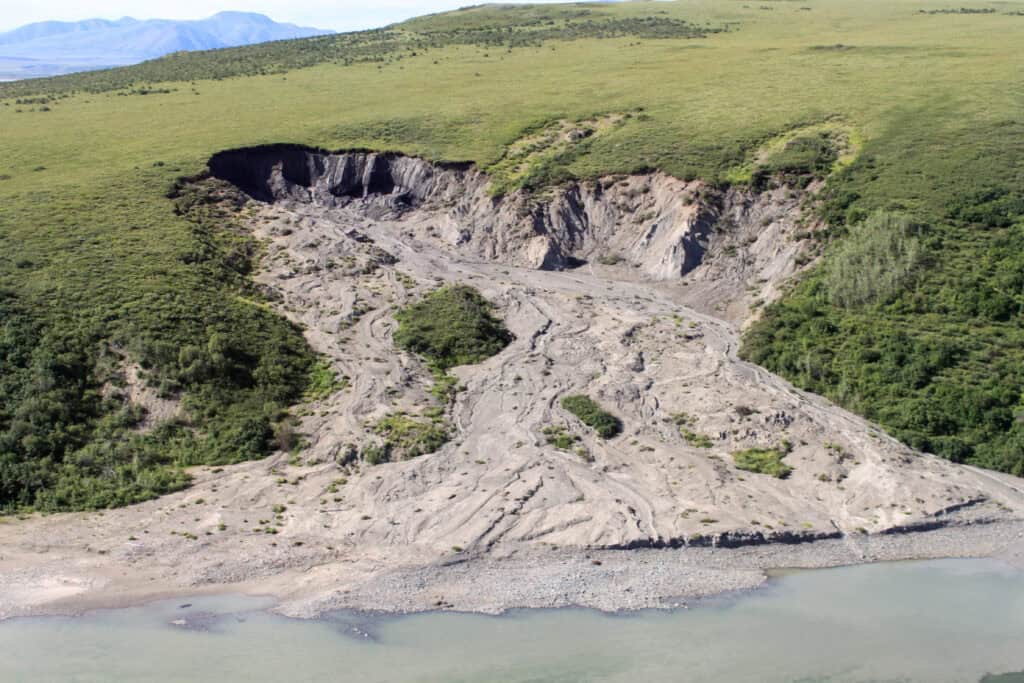 Permafrost thawing often looks like this site in Alaska. Image via Wiki Commons.
Permafrost thawing often looks like this site in Alaska. Image via Wiki Commons.
This finding complicates predictions for how permafrost thaw will impact the climate. It suggests that the initial pulse of greenhouse gases may be physical, while the biological contribution will follow a significant delay. But ultimately, both will play a role in our planet’s climate.
“There’s so much permafrost in the world — in Alaska, Siberia and in other northern cold regions,” Caro said. “We’ve only sampled one tiny slice of that.”
There is, of course, the concern of some of these microbes becoming pathogens. Caro said it’s unlikely that these microbes could infect people, but the team kept them in sealed chambers regardless. Yet as the permafrost melts, many of these microbes could simply escape into ecosystems.
The full consequences of the melting permafrost are not yet understood. For now, this research reveals that the duration of the thaw season may be a more critical factor than the intensity of warming. As long as the ground refreezes before the microbes fully wake up and proliferate, the vast stores of carbon may remain relatively safe. However, with longer and warmer summers, these ancient, revenant communities will have the time they need to establish themselves.
The study was published in JGR Biosciences.

